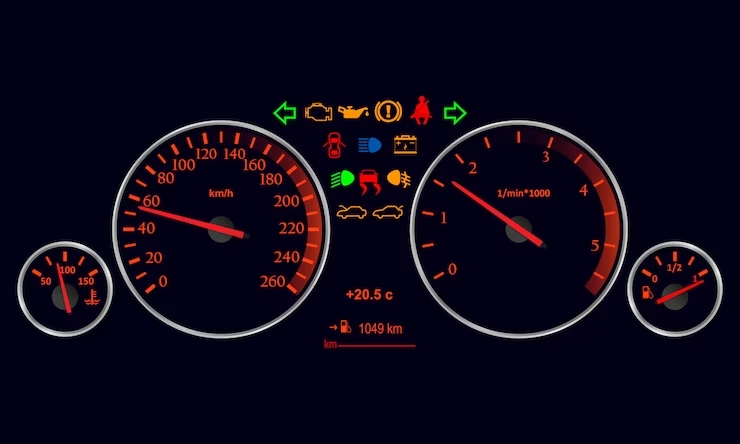Oil viscosity plays a crucial role in the proper functioning of your vehicle’s engine. It refers to the thickness or resistance of the oil to flow, and it is important to maintain the correct viscosity for optimal engine performance and protection. Some vehicles are equipped with oil viscosity warning lights to alert drivers to potential issues with the oil’s thickness. In this article, we will discuss the causes of oil viscosity warning lights and provide possible fixes to address them.
Causes of Oil Viscosity Warning Lights:
- Cold Weather: In cold weather conditions, oil tends to thicken, increasing its viscosity. If the oil becomes too thick, it may struggle to flow properly through the engine, leading to poor lubrication. This can trigger the oil viscosity warning light.
- Contaminants: Over time, contaminants such as dirt, debris, and engine sludge can accumulate in the oil. These contaminants can alter the oil’s viscosity, causing it to become thicker or more viscous than the recommended level. As a result, the warning light may illuminate.
- Dilution: Fuel or coolant leaks into the engine oil can cause dilution, reducing the oil’s viscosity. Diluted oil becomes thinner and may fail to provide adequate lubrication. This can trigger the oil viscosity warning light.
- Incorrect Oil Type: Using an oil with the wrong viscosity grade or specification can lead to viscosity-related issues. If the oil is too thick or too thin for the engine’s requirements, it can trigger the warning light.
Fixes for Oil Viscosity Warning Lights:
- Check Oil Level: Start by checking the oil level using the dipstick, as recommended by your vehicle’s manual. If the oil level is low, it can affect its viscosity. Add the appropriate type and amount of oil to bring it to the recommended level.
- Change the Oil and Filter: Regular oil changes are essential for maintaining the correct viscosity and removing contaminants. If the oil has become contaminated or is due for a change, perform an oil change and replace the oil filter. Use the oil grade specified in your vehicle’s manual.
- Warm up the Engine: If the oil viscosity warning light comes on in cold weather, allow the engine to warm up before driving. Warmer temperatures will help the oil flow more easily and reach the optimal viscosity.
- Resolve Leaks: If the oil has been diluted due to fuel or coolant leaks, it is crucial to identify and address the source of the leaks. Repairing the leaks and changing the contaminated oil will help restore the proper viscosity.
- Use the Correct Oil: Ensure that you are using the recommended oil viscosity grade and specification for your vehicle. Refer to the owner’s manual or consult a professional technician to confirm the correct oil type.
- Seek Professional Assistance: If the oil viscosity warning light persists or if you are unsure about the cause of the issue, it is recommended to consult a qualified mechanic or authorized service center. They have the expertise to diagnose and address any underlying problems with the engine or oil system.
Oil viscosity warning lights are designed to alert drivers to potential issues with the thickness of the oil. By understanding the causes of these warning lights and following the suggested fixes outlined in this article, you can address viscosity-related issues and ensure proper engine lubrication. Regular oil changes, using the correct oil grade, and resolving any leaks or contaminants are key to maintaining the optimal viscosity and protecting your engine. If you’re uncertain or unable to troubleshoot the issue yourself, it is always best to seek professional assistance for accurate diagnosis and repair.











